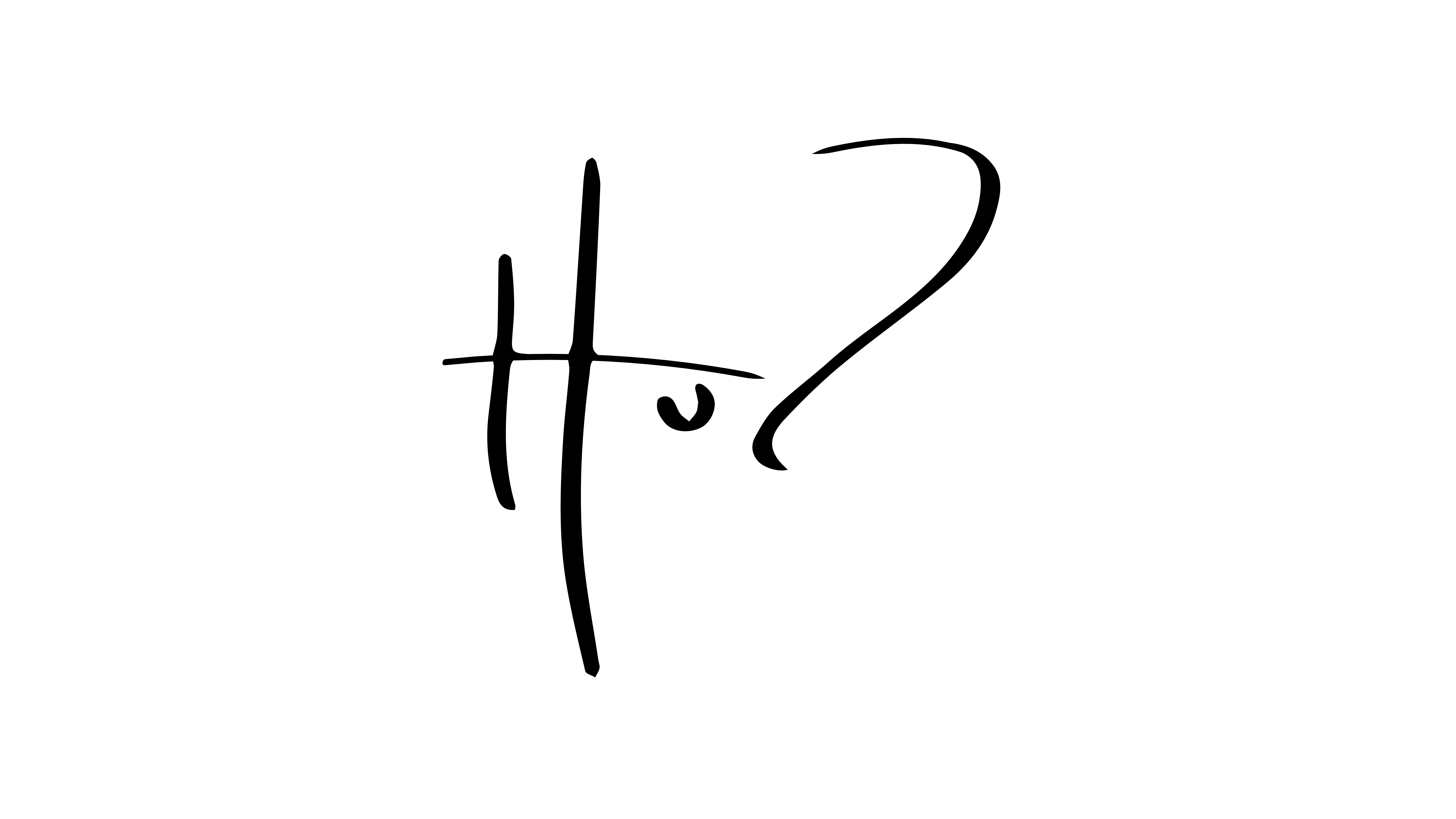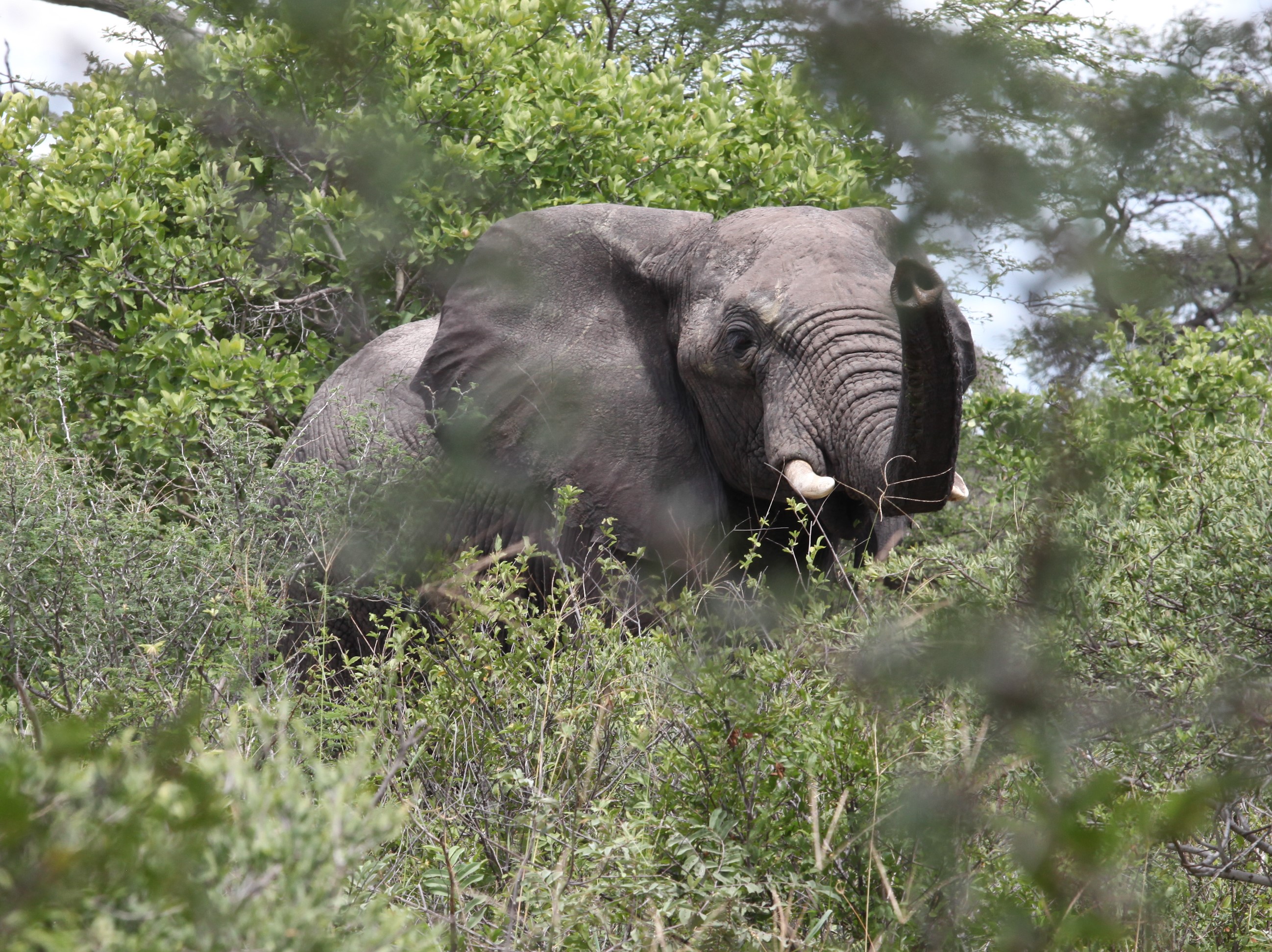You can read through the text below,or listen to the narrative.
Enjoy!
We could not see him yet, but we could hear the crack and thump of his browsing as he shouldered aside the seemingly impenetrable tangle of the thickets. He was close. So close that when he stopped, I could hear the grind of the great molars chewing through bundles of vegetation. A pinch of fine dust from between my feet told that the air was almost still, with an eddy now and then.
We should have moved out of his way, but I could not resist the temptation of getting a glimpse of him – maybe he was a huge tusker, and that would be a real thrill. So we remained until he finally broke through the wall of vegetation and stood half in the open. He was a young bull, so close now that I could count the thick hairs of his eyelashes, trace the swell of the veins under the thin skin of his ears.
We kept still, watching him from behind our frail lace of foliage. He wasn’t aware of us, yet. Even this close, if we kept still, it was unlikely that he would spot us. His eyesight wasn’t very good. But then his head came up. He stopped chewing. His ears came forward. His trunk probed. He had caught a whiff of us on the stir of the air. He wasn’t sure of what he had smelled yet, or from where, but his keen sense of smell was warning him – there is something alien to his world close by. It was time to fade back into the bush.
I try to avoid placing myself in a position where a wild animal becomes aware of my presence. And I encourage other admirers of wildlife to do the same. Wild animals are beautiful and fascinating to watch, but I believe it should be done from a respectful distance, well out of their personal space, even if they do not seem agitated – without in any way affecting their behaviour.
I see many videos and photographs where (I guess often well-meaning but, unthinking or unwitting) people force themselves on wild animals. Sometimes it is just an insistence that they should be accepted in the animals’ midst; sometimes it is unknowing direct interference; sometimes, it seems to me, it is even deliberate boasting – “look guys, I’m holding its tail.”
Wild animals do not do that to each other. They stick to their own kind, even where they congregate at, say, waterholes. Where they do mingle it is limited and impersonal and strictly about survival. So, why do us animals insist on forcing ourselves on others? They may tolerate our meddling and even on occasion be inquisitive, but I can often sense their stress from the constant pressure of human intrusion. Sometimes they even re-act with irritation – mostly to the glee or thrill of the onlookers.
I don’t necessarily want to single this out, because it is just one of many (and sadly, often much admired) examples, but there was recently an acclaimed video doing the rounds of a female leopard trying to cross a road with her two very small cubs. As she emerged out of the shrubbery there was a vehicle full of ogling humans, just a few paces away.
The cubs were still so small that they could hardly walk; just little bundles of cutely tottering fur. The fact that she was moving them at all at this stage said that all had not been well where she came from – she was certainly not taking them for a leisurely stroll.
It was a great “find” for the guide, or whoever was in charge, and no doubt cause for admiration. It was a boon for the passengers and the subject of much discussion over cocktails or dinners. For the leopard mother trying to protect her cubs against great odds, in fact just to survive herself, it was a harrowing experience.
She anxiously carried the cubs back into the bush, away from the vehicle, but she could only take one at a time and I was fearful that the remaining little guy, which was out in the open and started wandering when his mother wasn’t around, could get lost, or perhaps quickly get taken by a hyena or a raptor or a python or even a jackal.
The video lasted several minutes and never once did the rubber-necking humans consider moving back and giving the mother some space. It was distressing. But it was also extremely dangerous. The video was taken from an open vehicle. The leopard was very tense. She could easily have reacted differently – charged the vehicle. In a split second she could have covered the space and leapt in amongst the passengers. The result would have been bloody, to say the least. I realise that the guide would probably cavalierly retort that he/she “knows leopards” and they could “read the animal” and there was “absolutely no danger” and perhaps even, “anyway I was armed and ready.” On assertions like that I would rather decline to comment.


Loved the Ellie experience!
Thank you… as usual your writing is .
It’s such a temptation to be in close proximity….. the “little bundles of cutely tottering fur” are adorable! However watching them from a distance for as long as mom allows and the mere thought of cuddling them is all I need!
Unfortunately 99% of tourists do not respect the private space around wild animals! Most guides are rude and arrogant. (I do believe it’s all about the tip incentive)
Independent travellers race up and down the Park roads in search of a magical moment. When they do find one, they almost park on top of the animal(s)…. there are some seriously stupid people out there !!
Most photographers are the pits ♀️
I abhor people who claim that they “know” wild animals. One cannot even “know” a domestic animal fully. Whenever I see/ hear of a human being attacked by any animal, I believe it is a result of that human’s arrogance and disrespect for the animal. And this includes myself, because I have been bitten by quite a few rescue dogs because I imposed my ego and will on them. I would have loved to be able to experience the bush with someone like you.